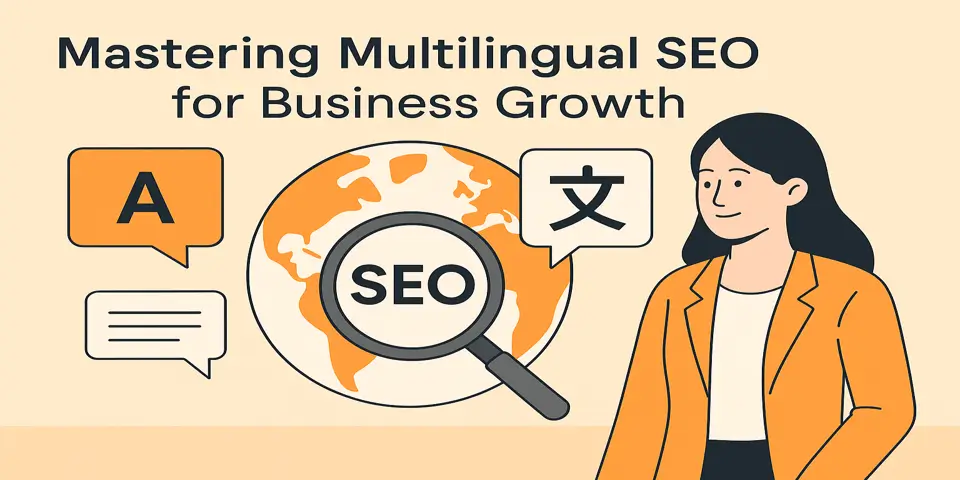15 Min to Unlock Business Growth with Multilingual SEO Strategies
In today’s interconnected world, the digital marketplace is more competitive than ever. Imagine your business being just a click away from a buyer in Munich or a client in São Paulo. Yet without optimized multilingual SEO, these potential customers might not even see your door, let alone step in. Unlocking the full potential of your business’s global reach is no longer a “maybe tomorrow” task— it’s a necessity. Welcome to the frontier of Multilingual SEO, where access to untapped markets and the promise of exponential growth await.
Table of Contents

What You’ll Learn
In this guide, we explore strategies tied to multilingual keyword targeting and its SEO benefits. You’ll learn how multilingual keyword targeting avoids common pitfalls in global SEO. With smart multilingual keyword targeting, your site reaches broader audiences. At SySpree, we use multilingual keyword targeting to drive real results. Every business can grow with multilingual keyword targeting. Don’t let poor multilingual keyword targeting hold you back.
Why Multilingual SEO Matters
A Global Audience Means Global Opportunities
If your website only caters to English-speaking countries, you’re potentially missing out on billions of non-English speakers searching for your services. By optimizing your digital presence for multiple languages, you can open avenues to demographics previously out of reach, transforming them into viable business leads.
SEO is Competitive; Multilingual SEO is Even More So
The internet speaks many languages, so multilingual keyword targeting is essential. Google supports over 100 languages, proving multilingual keyword targeting meets user expectations. Without multilingual keyword targeting, brands lose global ground. Even basic multilingual keyword targeting can outperform no effort. Competitors gain traction through multilingual keyword targeting alone. Don’t let weak multilingual keyword targeting cost you visibility.

Pain Points of SMEs
For SMEs earning over $20,000 monthly, multilingual keyword targeting helps scale without huge overheads. It supports revenue growth beyond local markets. Many fear losing control, but multilingual keyword targeting ensures quality remains intact. With the right plan, multilingual keyword targeting feels seamless. Don’t let hesitation block global reach—multilingual keyword targeting is proven. Growth begins with smart multilingual keyword targeting.
Missing Out: The Cost of Inaction
Neglecting to engage potential customers in their preferred language is not just a missed opportunity—it’s a competitive disadvantage. This oversight can lead to millions in untapped revenue, especially for markets whose first language isn’t English. Luckily, by leveraging SySpree’s experience in multilingual SEO, businesses can turn these disadvantages into rich opportunities.
Key Strategies for Mastering Multilingual SEO
1. Conduct Market Research
Understand which languages matter most to your target audiences by examining web traffic data and regional customer analytics. Are most of your search leads coming from Spain? Or are there significant hits from Russia without conversions? Make informed decisions about which languages to focus on first.
2. Use Professional Translators
Yes, Google Translate is free and easily accessible, but professional human translators are vital for nuanced and contextual coherence in your content. You don’t want to risk your message getting lost in translation—literally. At SySpree, we emphasize the value of professional expertise to ensure that your content speaks accurately and persuasively across languages.

3. Optimize for Localized Keywords
Localized SEO requires the integration of culturally and linguistically specific keywords. It goes beyond directly translating your existing keywords. For instance, slang terms, idioms, or dialect-specific phrases can often bring higher engagement rates. Involving someone who understands these nuances—or capitalizing on services from SySpree that offer this know-how—ensures you’re speaking the right language, even within sub-cultures.
4. Structure Your Website Appropriately
Hreflang Tags
Using hreflang tags helps Google understand the language and geographical targeting of a webpage. This is crucial for avoiding duplicated content issues and improving local rankings.
Site Architecture
Consider either having separate domains for different languages (e.g., .de for Germany) or using subdirectories/subdomains (e.g., .com/fr/ for French). Each has its pros and cons; the right choice depends on your business’s specific needs and goals. SySpree can help determine what best suits your infrastructure.
5. Create Multilingual Content That Engages
Regularly updated blog posts, infographics, and video content in local languages not only enhances visibility but also engagement. Culturally relevant material could be the difference between a quick site exit and a new customer. Let SySpree guide you in crafting content strategies that build international rapport while preserving your brand’s essence.

6. Localize Meta Tags and Descriptions
Title tags and meta descriptions are key components in search results. Translating these elements increases the likelihood of clicks from foreign audiences—a crucial step in capturing global traffic effectively.
7. Monitor Performance and Iterate
The work doesn’t stop once you’ve put your multilingual site live. Continuously track performance metrics on search engines and refine your strategy based on data insights. Regular audits should focus on identifying and resolving issues such as technical roadblocks, page speed, and language relevancy. SySpree’s analytics-driven SEO services ensure you’re always ahead of the curve.
Real-Life Success Stories: Achieving Global Reach
To give these strategies a real-world perspective, let’s delve into a success story. Consider the case of a mid-sized skincare brand that harnessed SySpree’s multilingual SEO capabilities. They initially faced stagnation in market expansion, limited almost exclusively to English-speaking regions. After implementing a multilingual strategy, they witnessed a 60% increase in international traffic and opened new avenues in markets like Southeast Asia and France. The key was their fully optimized foreign content strategy, created and supervised by SySpree.

Conclusion
Integrating multilingual SEO might seem daunting initially, but embracing complexity is at the heart of significant growth. Don’t get caught in the trap of underestimating the power of language in marketing— it’s your passport to global business expansion. The stakes can’t be clearer. With SySpree, you’re not just hiring a service provider—you’re gaining a partner in creating a web of connections worldwide. We equip you not only with multilingual SEO best practices but also an edge over competitors who haven’t yet embraced this critical shift.
Ready to Expand Your Global Footprint? Contact SySpree today to explore our multilingual SEO solutions tailored to your business needs.
Other blogs you might like –





